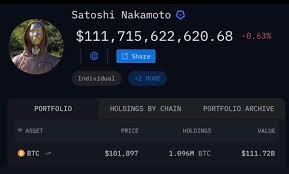
Satoshi Nakamoto: Unraveling the Enigma Behind Bitcoin and Its Smallest Unit
The name Satoshi Nakamoto echoes through the digital corridors of the 21st century, synonymous with revolution, decentralization, and the birth of a new financial era. Yet, despite their monumental impact, Satoshi Nakamoto remains one of the greatest unsolved mysteries of the modern age: the pseudonymous creator of Bitcoin, the world’s first and most prominent cryptocurrency.
Who is Satoshi Nakamoto? The Genesis of a Digital Revolution
In October 2008, a white paper titled “Bitcoin: A Peer-to-Peer Electronic Cash System” was published under the name Satoshi Nakamoto. This document laid the foundational principles for a decentralized digital currency, free from governmental or institutional control. Just a few months later, in January 2009, the Bitcoin network went live with the mining of the genesis block. For approximately two years, Satoshi Nakamoto actively collaborated with developers on the project, engaging in forums and refining the code. Then, in late 2010, they mysteriously vanished, handing over control of the Bitcoin source code repository and network alert key to Gavin Andresen, and ceasing all public communication.
The true identity of Satoshi Nakamoto has been the subject of intense speculation for over a decade. Is it a single person, a group of brilliant minds, or perhaps even an artificial intelligence? Theories abound, pointing fingers at various individuals from cryptographers to computer scientists, but none have been definitively proven. The mystery only adds to the mystique and legend surrounding Bitcoin’s origins, reinforcing the decentralized, trustless nature that Bitcoin itself embodies.
The Birth of Bitcoin: A Paradigm Shift
Bitcoin wasn’t just another digital currency; it was a groundbreaking innovation built upon the revolutionary concept of blockchain technology. This distributed ledger system ensures transparency, immutability, and security without the need for a central authority. Every transaction is recorded on the blockchain, verified by a network of participants (miners), and then added to a public ledger, making it virtually impossible to tamper with. This ingenious design solved the long-standing “double-spending problem” for digital currencies, paving the way for a new form of digital asset.
The vision of Satoshi Nakamoto was to create an electronic payment system based on cryptographic proof instead of trust. This vision has not only led to the creation of Bitcoin but has also inspired thousands of other cryptocurrencies and a vast ecosystem of blockchain applications, fundamentally altering our perception of money, finance, and data integrity. Learn more about the underlying blockchain technology that powers Bitcoin.
Understanding the Smallest Unit: What is a Satoshi?
While Bitcoin (BTC) is the primary unit of currency, it can be divided into smaller increments, much like dollars can be divided into cents. The smallest unit of Bitcoin is called a satoshi, named in honor of its enigmatic creator. One Bitcoin is equivalent to 100,000,000 (one hundred million) satoshis. This granular division makes Bitcoin highly adaptable for micro-transactions and allows for incredibly precise value transfers, even if the value of a full Bitcoin is substantial.
Satoshi Breakdown:
- 1 Bitcoin (BTC) = 100,000,000 Satoshis
- Conversely, 1 Satoshi = 0.00000001 BTC
The existence of the satoshi unit highlights the forward-thinking design of Bitcoin, anticipating a future where its value might rise significantly, necessitating smaller denominations for everyday use. It’s a subtle but powerful tribute to the individual or group who sparked the digital currency revolution.
The Enduring Legacy of Satoshi Nakamoto
The disappearance of Satoshi Nakamoto has only solidified their legendary status. By stepping away, they ensured that Bitcoin would truly be decentralized, not controlled by a single individual or entity. This act reinforced the very ethos of the project and allowed the community to shape its future. The legacy of Satoshi Nakamoto is not just Bitcoin itself, but the open-source movement, the cryptographic principles, and the paradigm shift toward a more transparent and equitable financial future that they ignited. Their ghost continues to haunt and inspire the world of digital currency and beyond.




